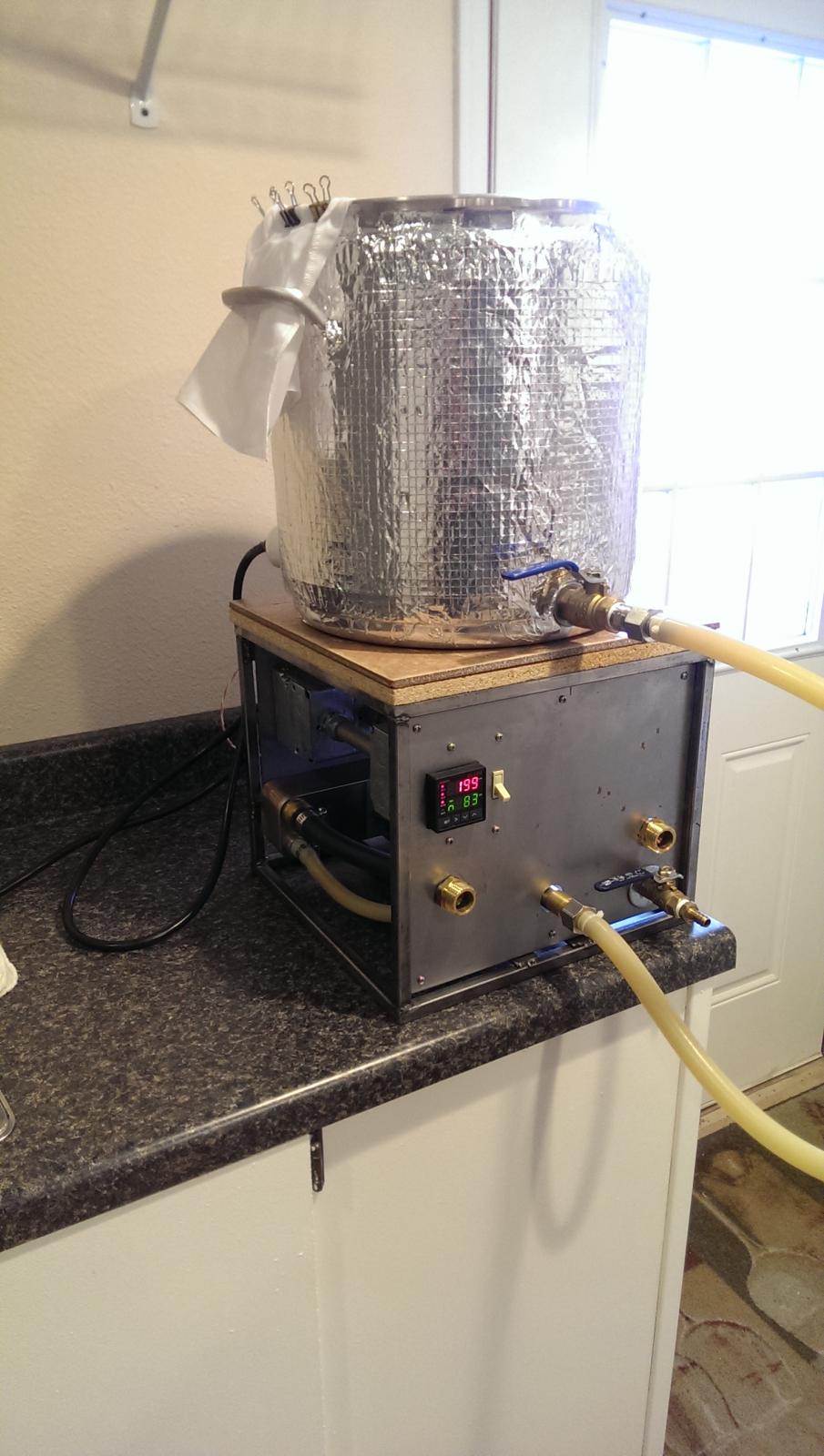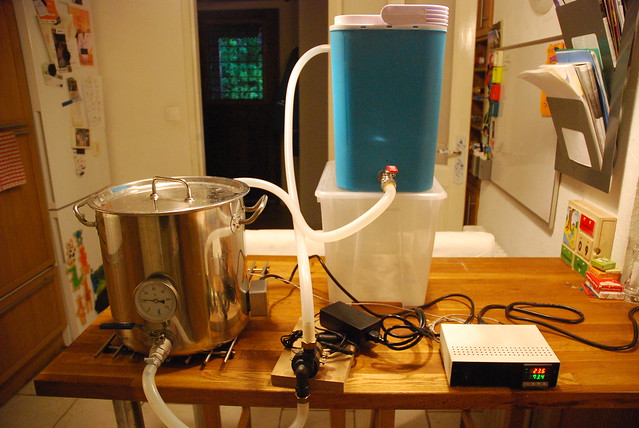I realize that I am replying to an old thread, but this seems to be the best resource for info regard CB20 builds. I built a system identical to JKarp's several years ago. After a brief hiatus I setup my equipment again and during testing discovered a leak in my CFC (liquid crossing from wort side to coolant side) which is likely due to my poor craftsmanship (homemade unit). I'm looking at 2 options moving forward.
- Repair the existing, or purchase a new CFC
- Convert to a whirlpool immersion chiller setup
I like the idea of the whirlpool IC as I already whirlpool with the current setup; and I have seen others mentioning that they used an IC in their CB20 builds. I'm struggling with how to implement an IC with the heating element protruding into the boil kettle. Do I set the IC into the kettle, work the element between the coils and leave in place (a la HERMS) during the entire operation? Do I use a hook to latch the IC to the lip of the kettle top, so as to suspend the IC above the heating element in the kettle? Do others just let the IC rest atop the heating element?
For those implementing the CFC; is there a reason to flow back to the kettle? It seems a bit odd to cool a small portion of wort in the CFC then send it back to a much larger volume of wort. Any CFC users chill in a single pass format directly into the fermenter?










![Craft A Brew - Safale S-04 Dry Yeast - Fermentis - English Ale Dry Yeast - For English and American Ales and Hard Apple Ciders - Ingredients for Home Brewing - Beer Making Supplies - [1 Pack]](https://m.media-amazon.com/images/I/41fVGNh6JfL._SL500_.jpg)



















































